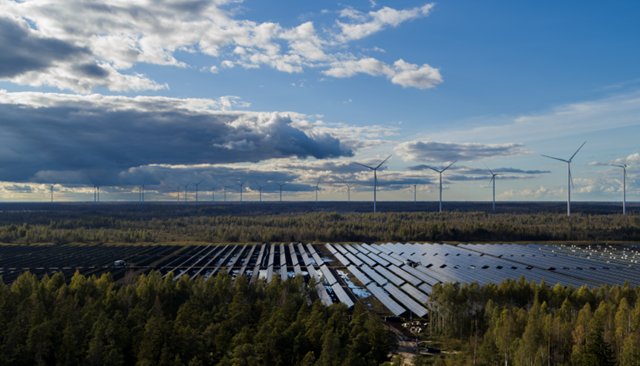Eesti Energia and German virtual power plant provider emsys VPP have prequalified the 74MW Sopi solar park for participation in Estonia’s automatic and manual frequency restoration reserve markets.
The project, which entered operation earlier this year and is run by Eesti Energia’s renewables arm Enefit Green, becomes the largest solar asset in the Baltics to gain access to both aFRR and mFRR markets.
Following successful testing in collaboration with system operator Elering, the park is now approved to deliver 30MW of aFRR and 45MW of mFRR capacity for down-regulation.
Kristjan Kuhi, board member at Eesti Energia, said the qualification represents a significant shift in how solar and wind assets can support grid stability.
“The prequalification of large-scale renewable energy production units for frequency markets proves that wind and solar power plants can also provide frequency reserves – something that has traditionally been the domain of dispatchable power plants,” he said.
The plant forms part of Eesti Energia’s virtual power plant system, which aggregates flexible generation and consumption assets for real-time grid control.
“Renewable energy sources like wind and solar need to play a vital role in ensuring grid stability,” said Timo Buschmann, head of key accounts at emsys VPP.
“Enabling the provision of aFRR and mFRR with our Virtual Power Plant in partnership with Eesti Energia represents a major step forward in our dynamically growing presence in the Baltics.”
Rainer Tammus, head of renewables project development at Enefit Green, said the qualification marks “a significant milestone for the entire renewable energy sector”.
He added that the Sopi facility shows how solar can deliver real-time system support in both medium- and short-notice balancing markets.
The 75GWh-a-year project supplies the equivalent of around 22,500 Estonian households.
The move is part of a broader strategy to boost regional energy security following synchronisation of the Baltic grid with the continental European frequency area.
Estonia’s grid is now supported by dispatchable capacity at Enefit Power, renewable assets in Estonia and Lithuania, and a new battery storage facility at Auvere.
Eesti Energia said frequency market participation will reduce the need for costly backup capacity, helping to stabilise prices while lowering import dependence.

